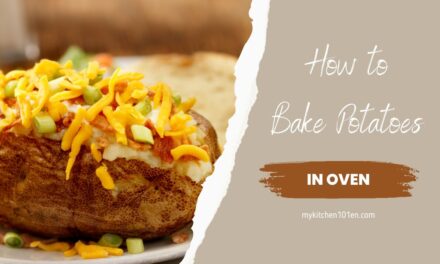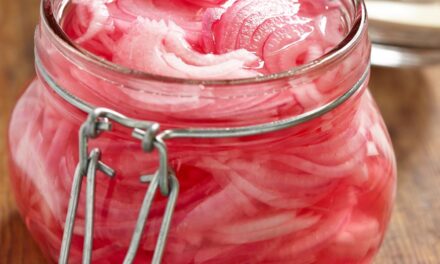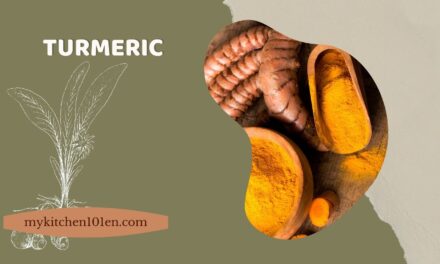Is Potato a Vegetable? Yes, potatoes are considered vegetables. The humble potato has been a staple food for centuries, enjoyed by people all around the globe.
Table of Contents
Introduction:
But have you ever wondered whether potatoes are vegetables or something else entirely?
In this blog post, we will explore the classification of potatoes, their history, and their role in a balanced diet.
Understanding the classifications of foods is crucial for maintaining a healthy lifestyle and ensuring proper nutrition.
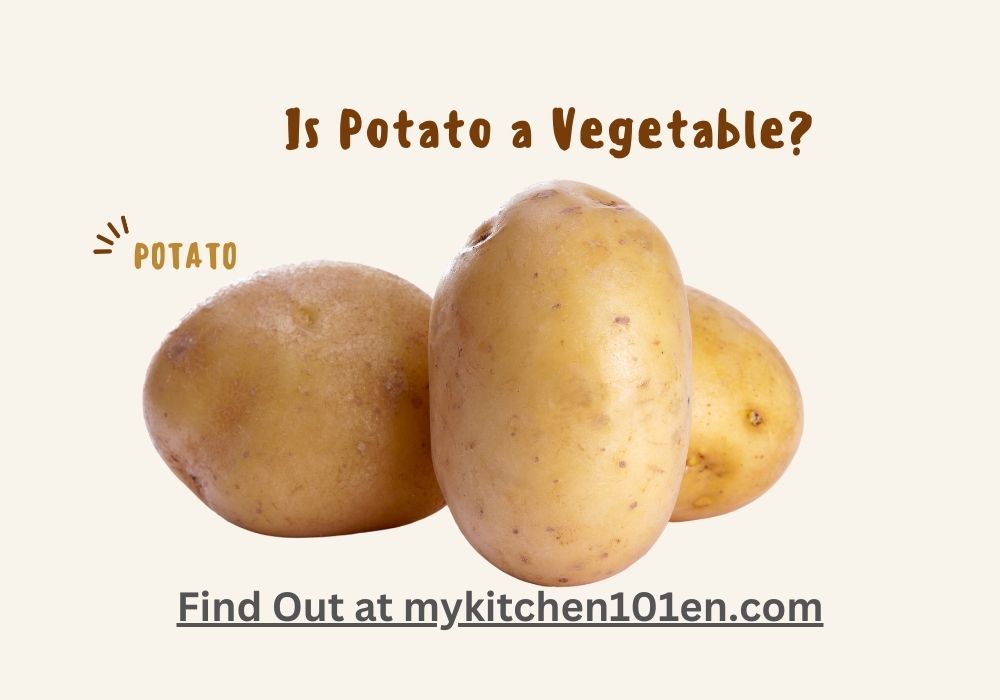
Key information about potatoes:
| Category | Information |
|---|---|
| Origin | Andean region of South America |
| First Cultivated | Over 7,000 years ago |
| Introduced to Europe | 16th century by Spanish explorers |
| Botanical Classification | Solanaceae (nightshade) family; classified as tubers |
| Major Producers | China, India, Russia, Ukraine, United States |
| Number of Varieties | Over 4,000 |
| Popular Varieties | Russet, Red, Yellow, Fingerling, Yukon Gold, Purple |
| Nutrients | Vitamin C, Vitamin B6, Potassium, Magnesium, Dietary Fiber |
| Cooking Methods | Boiling, Baking, Frying, Mashing, Roasting, Grilling, Steaming |
| Culinary Uses | Side dishes, salads, soups, casseroles, snacks, main courses, and more |
| Storage | Cool, dark, and well-ventilated place, away from direct sunlight and moisture; avoid refrigeration |
This table provides a summary of key information about potatoes, including their origin, classification, nutritional value, and culinary uses.
What is a vegetable?

A vegetable is defined as the edible part of a plant, which may include roots, stems, leaves, flowers, or even seeds. Vegetables are classified based on their botanical characteristics and the parts of the plant we consume.
Some common categories of vegetables include root vegetables (e.g., carrots and beets), leafy greens (e.g., spinach and kale), and legumes (e.g., beans and peas).
What is a potato?
Potatoes are tubers, which means they grow underground and store energy for the plant in the form of carbohydrates. These swollen, starchy parts of the plant’s stem are rich in essential nutrients, such as vitamins C and B6, potassium, and dietary fiber.
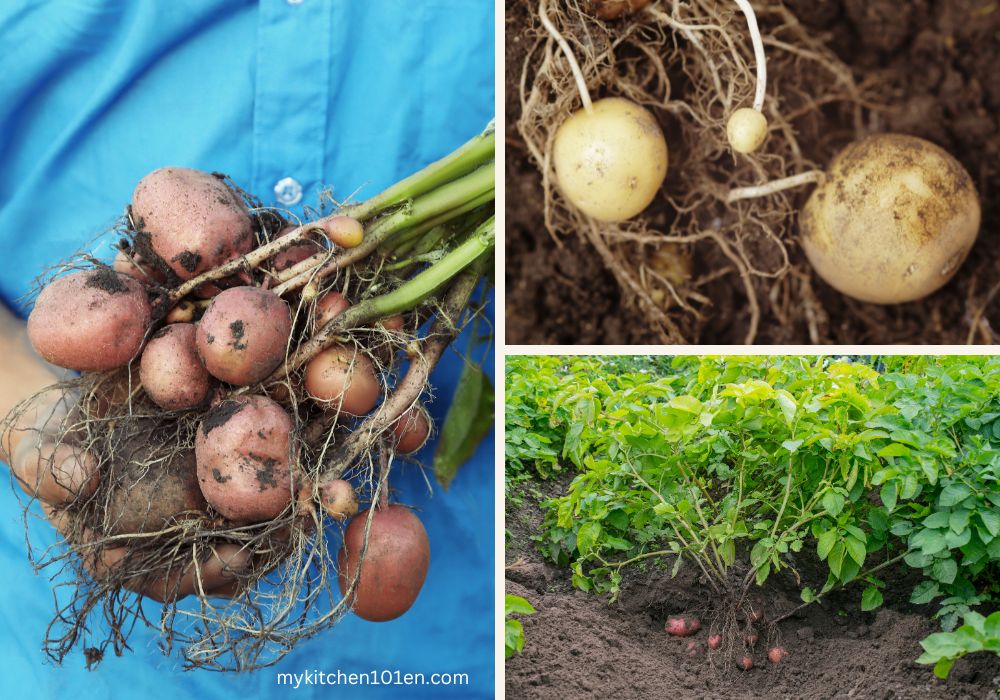
Related: Chicken curry with potatoes is a typical Southeast Asia chicken curry that consists of chicken, potato, and coconut milk as the main ingredients.
There are numerous potato varieties, each with unique flavors and textures, making them suitable for various culinary applications, from mashed potatoes to French fries.
Comparing potatoes to other vegetables
When it comes to nutrition, potatoes share many similarities with other vegetables. They provide essential vitamins, minerals, and dietary fiber, all of which are vital for maintaining good health.
However, potatoes contain more carbohydrates and calories than most other vegetables.
Despite these differences, potatoes still play an essential role in a balanced diet. They are versatile and nutritious food options that can complement or even replace other vegetables in various recipes.
Related: Curry puff with potato, this recipe calls for Russet potato.
For example, you can use mashed potatoes as a delicious, nutrient-rich alternative to rice or pasta, or prepare a potato-based salad instead of a traditional leafy green salad.
Are potatoes vegetables or not?
When exploring the botanical classification of potatoes, we find that they belong to the nightshade family, Solanaceae, along with tomatoes, peppers, and eggplants.
As tubers, they grow underground and store energy for the plant in the form of carbohydrates. This classification supports the argument that potatoes are indeed vegetables.
There are some misconceptions and common arguments against potatoes as vegetables, often stemming from their high carbohydrate content and association with unhealthy dishes like French fries and potato chips.
However, these arguments overlook the fact that potatoes, in their natural form, are nutrient-rich and can be a valuable part of a balanced diet.
Potatoes are indeed vegetables, specifically tubers, and should be recognized as such.
The health benefits of potatoes as vegetables
Potatoes offer numerous health benefits when consumed as part of a balanced diet. They are rich in essential vitamins and minerals like vitamin C, potassium, and vitamin B6. They can aid in weight management, digestion, and blood pressure regulation due to their fiber content and potassium levels.
To maximize their nutritional benefits, consider cooking potatoes in healthy ways, such as boiling, baking, or roasting. You may pair them with other nutrient-dense foods like lean proteins and leafy greens.
Here is a table showing the major potato-producing countries:
| Rank | Country | Production (in millions of metric tons) |
|---|---|---|
| 1 | China | 90 |
| 2 | India | 49 |
| 3 | Russia | 30 |
| 4 | Ukraine | 22 |
| 5 | United States | 20 |
| 6 | Germany | 11 |
| 7 | Bangladesh | 10 |
| 8 | Poland | 9 |
| 9 | Netherlands | 7 |
| 10 | France | 6.5 |
Potato myths debunked
Common myths about potatoes, like them being inherently unhealthy or fattening. The truth is that whole, unprocessed potatoes are nutritious and can be part of a healthy diet.
The problem arises when they are heavily processed or fried, which adds unhealthy fats and excessive calories.
To enjoy potatoes in a healthy way, focus on consuming whole, unprocessed potatoes, and use healthy cooking methods as mentioned above.
Also, be mindful of portion sizes and the ingredients you pair with your cooked potatoes.
How to cook potatoes – simple boiling
There are many ways to cook potatoes, but the most common is boiling them. To do this, you’ll need to place your potatoes in a pot with enough water to cover them by at least an inch. Add salt (½ teaspoon per quart of water) and bring to a boil over high heat; then reduce heat slightly and allow them to simmer until they’re tender when pierced with a fork or knife.
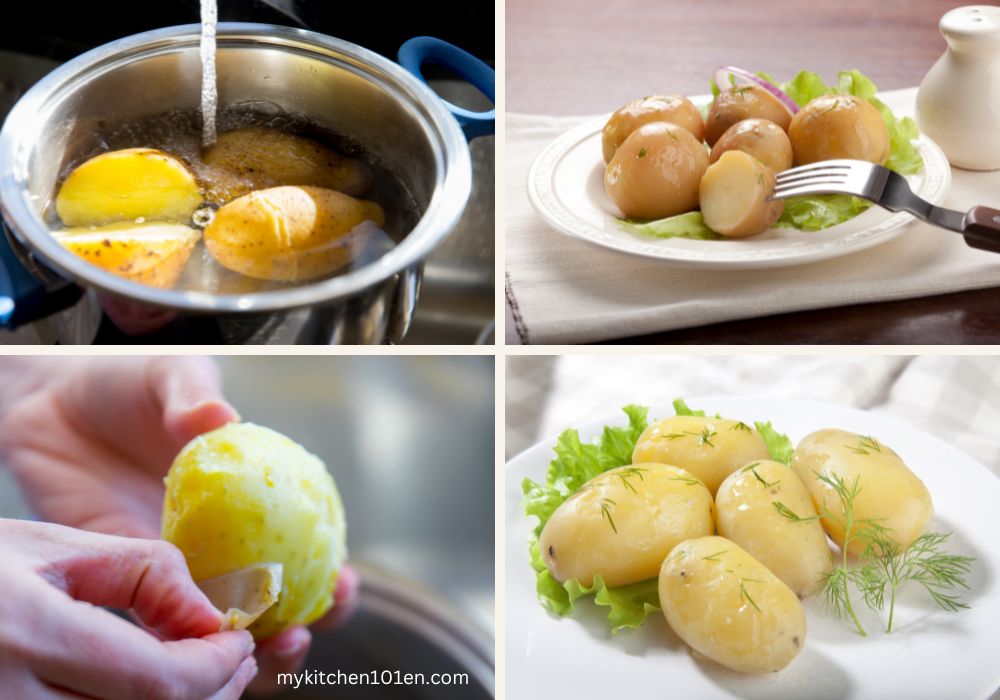
Related: Potato Cracker Recipe – Popular Asian-Style Snack
How to bake potato?
Related: How to Bake Potatoes In Oven
Baking a potato is one of the easiest ways to prepare this vegetable. Here’s how you do it, follow the step-by-step instructions below:
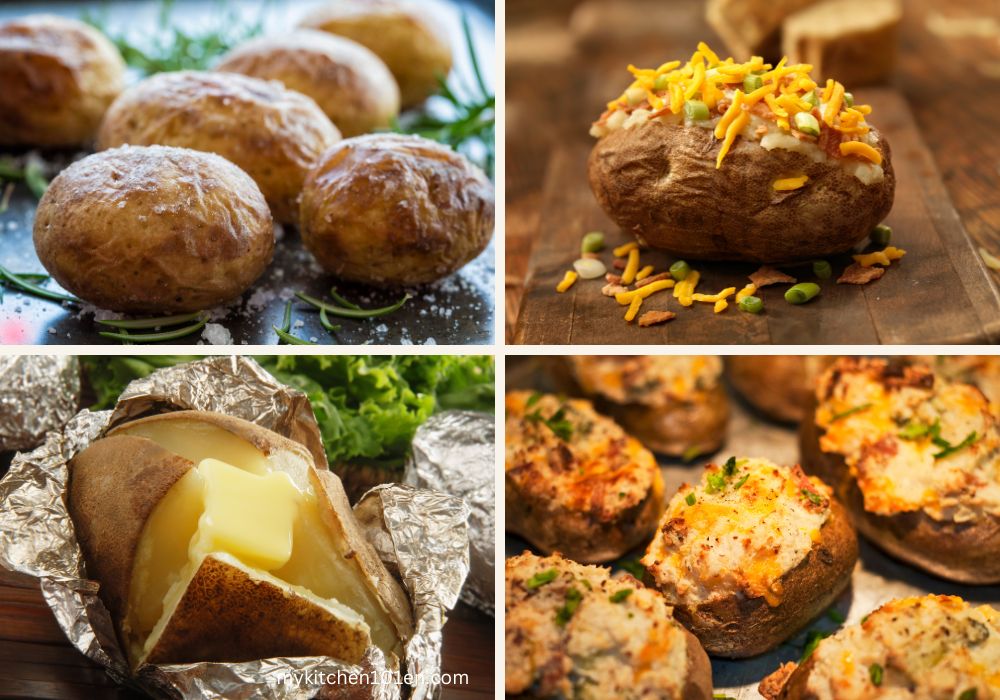
- Set your oven to 425°F (220°C) and allow it to preheat while you prepare the potatoes.
- Russet potatoes or other large, starchy potatoes are best for baking, as they have a fluffy texture when cooked.
- Scrub the potatoes thoroughly with water to remove any dirt or debris. A vegetable brush can help clean the skin.
- Pat the potatoes dry with a clean towel or paper towel.
- Use a fork to poke several holes all around the potato. This allows steam to escape and helps the potato cook evenly.
- Lightly coat the potatoes with cooking oil, and then season them with salt and pepper or other desired seasonings. This will help create flavorful skin.
- Arrange the potatoes directly on the oven rack or on a baking sheet lined with aluminum foil or parchment paper. Make sure to leave some space between for even cooking.
- Place the potatoes in the preheated oven and bake for 45-60 minutes, or until they are tender when pierced with a fork. Baking time may vary depending on the size of the potatoes and your oven heat.
- Carefully take the potatoes out of the oven.
- Allow the potatoes to cool for a few minutes before cutting them open. Make a small slit in the top of each potato using a sharp knife, and then gently press the ends together to open it up. Fluff the interior with a fork, and add your favorite toppings, such as butter, sour cream, cheese, chives, or bacon bits.
A baked potato can be served as a satisfying side dish or main course!
How to store potatoes?
Properly storing potatoes is important in keeping them fresh and edible for a longer period of time.
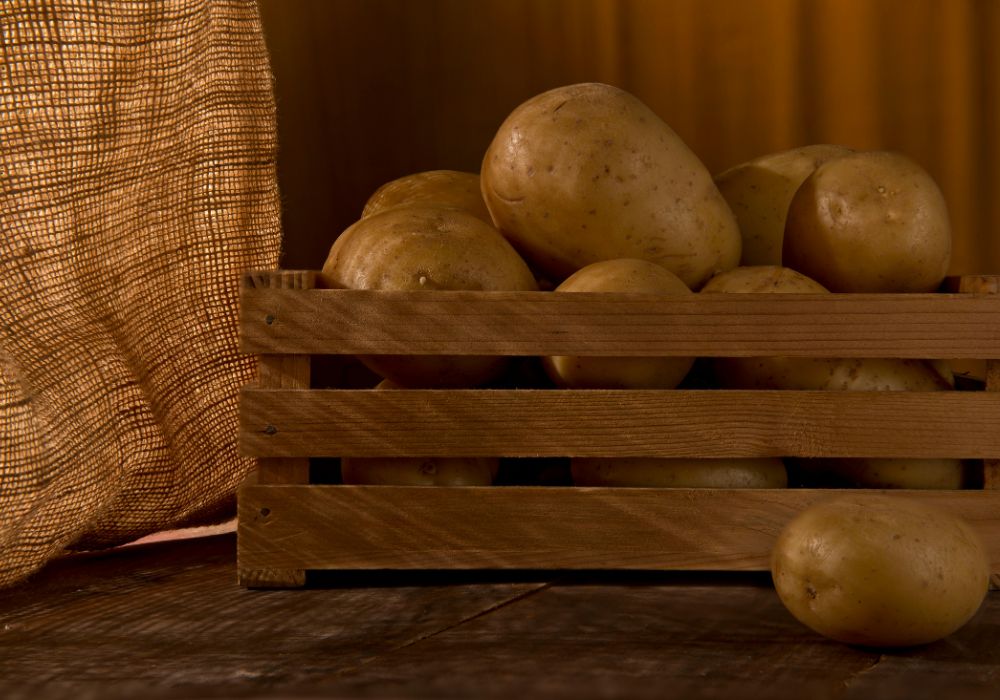
- Potatoes should be stored in a cool, dark place. The ideal temperature range is between 45°F and 50°F (7ºC to 10ºC)Cold temperatures can cause the starch in the potatoes to convert into sugar, altering their taste and texture.
- To prevent potatoes from turning green and producing solanine—a toxic compound that can cause illness in humans—keep them away from light by storing them in a dark place, such as a pantry or closet.
- To keep potatoes fresh, put them in breathable containers like paper bags or cardboard boxes rather than plastic ones.
- Store potatoes in a cool, dark place separate from onions; the gases that onions release can cause your potatoes to spoil more quickly. Also, store potatoes away from fruits that emit ethylene gas—like apples and bananas.
- Check for spoilage regularly: Inspect your stored potatoes regularly and remove any that show signs of spoilage, such as mold, soft spots, or a strong odor. This will help prevent the spoilage from spreading to other potatoes.
- Avoid washing potatoes before storage: Only wash potatoes when you’re ready to use them. Storing potatoes when they are wet can promote the growth of mold and bacteria.
- Manage humidity: Potatoes prefer a slightly humid environment, around 80-90% relative humidity. If your storage area is too dry, potatoes may shrivel and lose moisture. If it’s too damp, they may rot. If necessary, you can place a tray of water in the storage area to help maintain humidity.
By following these storage guidelines, you can keep your potatoes fresh and ready for use in your favorite recipes. Remember that potatoes are best consumed within a few weeks of purchase, but proper storage can help extend their shelf life.
Different types of potatoes
Some of the most common potato varieties include:
- Russet potatoes are large, oblong spuds with brown, rough skin and high starch content. They’re great for baking or mashing—they become extra fluffy when cooked!
- Yukon Gold potatoes are medium-sized, yellow-fleshed potato with a buttery flavor and slightly waxy texture that works well in many dishes.
- Red-skinned potatoes: Known for their waxy texture, thin red skin and ability to hold their shape during cooking, these are great for boiling or roasting but also work well in potato salad.
- Fingerling potatoes are small, elongated potatoes that come in various colors. They have a firm texture and can be roasted, boiled or sautéed.
- White potatoes have thin skin and a creamy texture. They can be boiled, mashed or fried.
- Purple or blue potatoes can be used in the same way as other waxy potato varieties, although they have a slightly nutty flavor and are rich in antioxidants.
- Although they are botanically different than potatoes, sweet potatoes are often included in this category and share similar culinary uses. Sweet potato flesh comes in white, yellow or orange colors; it can be baked or roasted but is also tasty mashed up as a side dish with dinner!
Related: How to make sweet potato ball
Potatoes come in many different varieties, but these are some of the most common ones that you’re likely to find at your local market or grocery store. Different potatoes work best for particular recipes.
Key takeaway
Here is a table of different types of potatoes and their ideal uses:
| Potato Type | Characteristics | Ideal Uses |
|---|---|---|
| Russet | Large, brown, rough skin, high starch | Baking, mashing, frying |
| Yukon Gold | Medium-sized, yellow flesh, buttery flavor | Mashing, soups, gratins |
| Red | Waxy, thin red skin | Boiling, roasting, potato salad |
| Fingerling | Small, elongated, various colors | Roasting, sautéing, boiling |
| White | Thin skin, creamy texture | Boiling, mashing, frying |
| Purple/Blue | Vibrant color, nutty flavor | Boiling, roasting, salads |
| Sweet | Sweet taste, white/yellow/orange flesh | Baking, roasting, mashing, various dishes |
Keep in mind that this table only covers some of the most common potato types, and there are many more varieties available with their unique characteristics and uses.
The bottom line
In summary, potatoes are versatile and nutritious vegetables that can offer numerous health benefits when consumed as part of a balanced diet. By debunking the common myths surrounding potatoes and understanding their true classification as tubers, we can embrace them as the valuable vegetables they are.
Frequently asked questions about potatoes
What are the health benefits of potatoes?
Potatoes are a great source of fiber, vitamin C, and potassium, which can help improve heart health and lower blood pressure. They also contain antioxidants and other nutrients that may help reduce inflammation and improve digestion.
Are potatoes good for weight loss?
Potatoes can be part of a weight-loss diet, but it’s important to watch portion sizes and avoid high-calorie toppings like butter or sour cream.
Are potatoes gluten-free?
While potatoes themselves are naturally gluten-free, some processed potato products (such as French fries or potato chips) may contain gluten.
What is the difference between a sweet potato and a regular potato?

The main differences between sweet potatoes and regular potatoes are their taste, nutritional profile, and botanical classification. Sweet potatoes have a sweeter taste and a softer texture when cooked, while regular potatoes have a mild, earthy taste and a variety of textures depending on the type. Sweet potatoes are richer in vitamins A and C, while regular potatoes are higher in potassium. Botanically, sweet potatoes belong to the morning glory family (Convolvulaceae) and are not closely related to regular potatoes, which are part of the nightshade family (Solanaceae).
Can potatoes be stored in the refrigerator?
It’s not recommended to store potatoes in the refrigerator, as the cold temperature can convert their starches to sugars and cause them to become gritty or mushy. Instead, keep potatoes in a cool, dry place (such as a pantry or cellar).
How do I cook potatoes?
Potatoes can be boiled, baked, roasted or fried. To boil potatoes, place them in a pot of water and boil until tender (20 to 30 minutes). To bake potatoes, pierce the skin with a fork and place in an oven preheated to 400ºF. Bake until the flesh is soft when squeezed. To roast potatoes, toss them in oil and seasonings and bake until done. To fry potatoes, cut them into strips and fry in hot oil until golden brown.
Can potatoes cause gas or bloating?
Yes, potatoes can cause gas or bloating in some individuals. This is because they contain complex carbohydrates, specifically resistant starch, which can be difficult for some people to digest. As the resistant starch ferments in the large intestine, it can produce gas and lead to bloating. Cooking potatoes thoroughly and chewing them well can help alleviate these symptoms for some people.
What are some healthy ways to cook potatoes?
Healthy ways to cook potatoes include baking, roasting, or boiling them with minimal added fat or salt. Try seasoning them with herbs and spices instead of high-calorie toppings or dipping sauce.
How many calories are in a potato?
The number of calories in a potato depends on the size and preparation method. On average, a medium-sized baked potato with skin contains about 160 calories, while a cup of mashed potatoes contains around 200 calories.
What are some common types of potatoes?
There are many types of potatoes, including russet, red, yellow and fingerling. They each have slightly different flavors and textures; some varieties are better suited to cooking methods than others
Can potatoes be frozen?
Yes and no, potatoes can be frozen, but it is recommended to blanch or partially cook them first to preserve their texture and flavor. Raw potatoes don’t freeze well and can become grainy or mushy when frozen and then thawed. After blanching or cooking, let the potatoes cool, then store them in airtight containers or freezer bags before placing them in the freezer.
Are potatoes high in carbs?
Yes, potatoes are higher in carbohydrates than most other vegetables. However, they can still be part of a healthy diet—in moderation and especially if you choose lower-carb varieties like sweet potatoes.
Are potatoes bad for your health?
Potatoes are generally considered a healthy food when consumed in moderation as part of a balanced diet. However, consuming too many potatoes or adding high-calorie toppings like butter, cheese, or sour cream can contribute to weight gain and other health problems.
Can I grow potatoes in a container?
Yes, you can grow potatoes in a container such as a large pot or using a grow bag. Although container soil dries out faster than the ground, proper watering can result in an abundant harvest. Start by planting seed potatoes in the soil and gradually adding more soil as the plant grows. To grow potatoes indoors, provide adequate heat and light, either through a sunny window or grow lights. Harvest the potatoes when the plant starts to die back.
Are there any risks associated with eating potatoes?
Potatoes are generally safe to eat for most people. However eating potatoes comes with a few risks, such as consuming green potatoes containing the toxic compound solanine, which can cause adverse symptoms. Unhealthy preparation methods, like deep-frying or adding excessive amounts of high-calorie toppings, can lead to an unhealthy dish. Additionally, while rare, some individuals may experience an allergy or intolerance to potatoes, causing symptoms like itching, swelling, or digestive issues.

